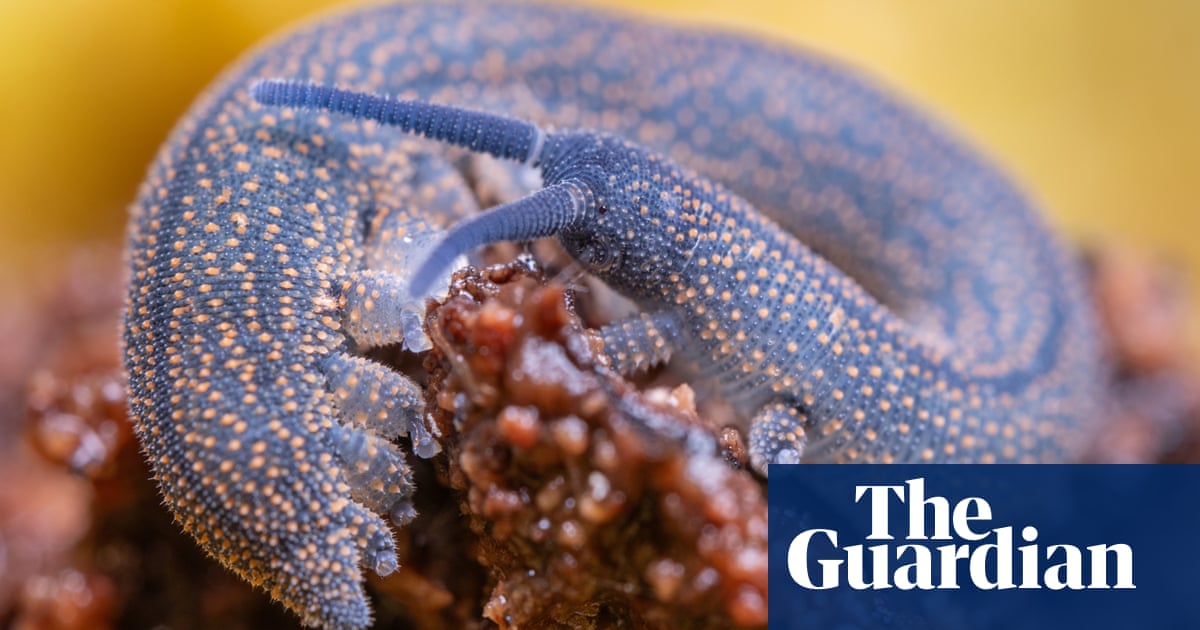An ancient gummy-looking worm-like creature with a vicious hunting method that involves projecting sticky goo from its head has been crowned New Zealand’s bug of the year.
The Peripatoides novaezealandiae is from the family of velvet worms, or Ngāokeoke in the Māori language. The invertebrates have rows of pudgy legs and skin speckled like a galaxy, and are considered “living fossils”, having remained virtually unchanged for 500m years.
“They are from this ancient lineage and they are unique,” says On Lee Lau, who works in the collections team at Tūhura Otago Museum and backed the creature to win the country’s annual bug of the year award.
“They seem very soft and like a slow-moving, stumpy kind of caterpillar,” Lau said. “But they have that dark secret where they’re really amazing hunters, and can shoot slime out of their oral papillae.”
Velvet worms are not actually worms or caterpillars, despite their names and resemblance. Rather, they are considered something of a missing link between worms and insects and are so distinctive from other invertebrates they have their own taxonomic rank below “kingdom” and above “class,” called Onychophora.
The Peripatoides novaezealandiae is one of roughly 30 velvet worms endemic to New Zealand. They typically reside on the forest floor, where they shoot jets of sticky fluid on to their prey, before dissolving it into a soup and slurping it up. Velvet worms are thought to live for roughly five years and produce 10 to 20 offspring annually. Some, including the winner, hatch their eggs internally and bear live young.
The elusive velvet worms are difficult to study as they can be hard to find, and while the winning species is thought to have a stable population, they are subject to threats such as habitat loss and predators, according to the Department of Conservation. Globally, insect numbers are plummeting due to intensive agriculture, urbanisation and climate change.
The Entomological Society of New Zealand launched the bug of the year competition in 2023, inspired by the country’s wildly popular bird of the year competition. The popularity of the bug awards is growing, with this year’s competition generating the highest number of voters so far – nearly 10,000.
The velvet worm won with 2,652 votes, just 110 points ahead of the runner-up – an endemic apple-green praying mantis. Other contenders included a wingless fly that hitches rides on bats, a slug that looks remarkably like a gherkin, an exquisite lichen-coloured moth, and a sea slug named after Sméagol from Lord of the Rings.
Jenny Jandt, a senior zoology lecturer at the University of Otago who helps coordinate the competition, said this year’s line-up was the most diverse yet, with every one of the 21 bugs representing a different taxonomic family.
The competition aims to highlight not just the conservation status of bugs and the important ecological role they play, but to foster celebration, Jandt said.
Many of the creatures go unnoticed and unrecognised, Jandt said. “You have to look for them. But once you start looking, the world becomes this bigger, more magical place.”










